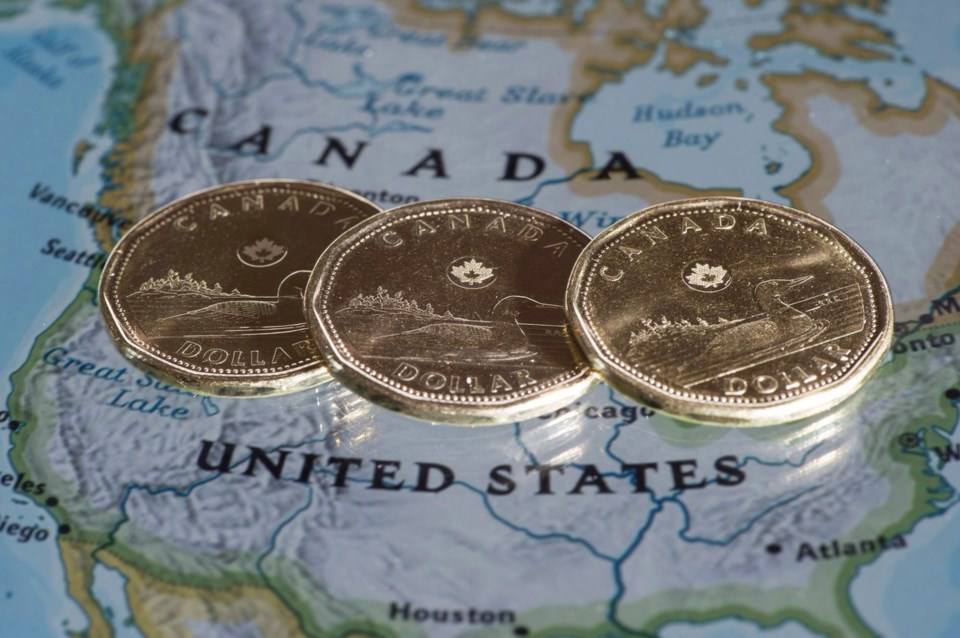Experts say Donald Trump’s election victory could shift interest rate policy in the U.S. as his promised policies risk higher inflation, which could ultimately have implications for Canadian rates and the loonie.
Among those promises are large tariffs on imported goods, especially from China, as well as lower tax rates and lighter regulation.
Trump has promised that with him as president, “inflation will vanish completely.” But some have raised concern that his economic policies could actually put upward pressure on inflation, and in turn, slow the pace of interest rate cuts expected from the U.S. Federal Reserve.
"Tradition tells us that that increase in tariffs will increase inflation in the U.S.," said Sheila Block, an economist with the Canadian Centre for Policy Alternatives.
Higher inflation would mean the U.S. Federal Reserve could be slower to cut interest rates, and markets are already shifting their bets on how low the central bank is likely to go on rates.
“If you’re enacting tariffs and pressing hard on the accelerator and creating job shortages and scarcity and wage inflation by running the economy hot, then the Fed won't necessarily have as much license to cut rates as soon or as deeply as they would otherwise,” said Brian Madden, chief investment officer with First Avenue Investment Counsel.
The U.S. central bank cut its key rate as expected on Thursday by a quarter of a percentage point, lowering its benchmark overnight interest rate to the 4.5 per cent to 4.75 per cent range.
Economists at Goldman Sachs have estimated that the proposed 10 per cent tariff, as well as proposed taxes on Chinese imports and autos from Mexico, could mean inflation rises near three per cent by mid-2026.
Following the election, markets started to price in a slightly higher "neutral rate" for the Fed, according to a TD Economics report Wednesday. That means markets believe the central bank will halt its cutting cycle at a higher rate than previously anticipated.
“We are changing our forecast for the Fed, as higher inflation results in a slower pace of rate cuts in 2025,” the TD report said — with the Fed ending 2025 with its key rate at 3.5 per cent instead of three per cent, before reaching three per cent in 2026.
That means “we don’t see any change to the neutral rate, just that the Fed gets there later,” the economists wrote.
As the Bank of Canada works through its own rate cuts to address the cooling economy, experts say it has to keep the U.S. economy and the Fed’s policy in mind.
“As the value of the Canadian dollar is reduced relative to the U.S. dollar, that is also inflationary, because ... many things that we import are denominated in U.S. dollars,” said Block.
“I think ... that would be a factor that would make the Bank of Canada more hesitant about cutting rates too quickly,” she said.
The Bank of Canada began cutting rates before the Fed as the Canadian economy weakened faster and more significantly under the weight of rate hikes meant to fight inflation.
"I think the divergence in the path for the Bank of Canada and the path for the Fed was going to happen under any scenario, but now you've got a whole confluence of things," said Madden, with a new "pro-growth" president in the U.S. and continued weakness in the Canadian economy, which he said could be compounded by recent cuts to immigration and temporary foreign workers.
"It seems quite likely that Canada is going to be operating in an excess supply position, which will give the Bank of Canada the green light to cut rates much more quickly to neutral," said Madden.
"And there will be a wide gap in the two countries' overnight rates, if that should happen, which will probably create downward pressure on the on the Canadian dollar."
However, Madden thinks the effect of a weaker loonie on Canadian inflation won't be massive.
"On the one hand, imported goods would cost more because you're buying them with cheaper dollars. On the other hand, Canadian exports into global markets, in the U.S. in particular, would be more competitive given the weaker Canadian dollar, which could stimulate demand," he said.
If Trump implements his tariff plan, Canadian export volumes to the U.S. could be reduced by nearly five per cent by early 2027, said the TD economists, with costs increasing for domestic producers.
“The hit to growth could force the Bank of Canada to cut interest rates by about (half to three-quarters of a percentage points) more than we currently forecast, widening the spread to U.S. rates and putting additional downward pressure on the Canadian dollar,” they wrote, adding that the loonie could go below 70 cents U.S.
Tariffs would also mean Canadians paying more for imports, feeding a “temporary and modest re-acceleration of inflation” before reverting back to the central bank’s two-per-cent target by 2026, they said.
— With files from The Associated Press
This report by The Canadian Press was first published Nov. 8, 2024.
Rosa Saba, The Canadian Press




